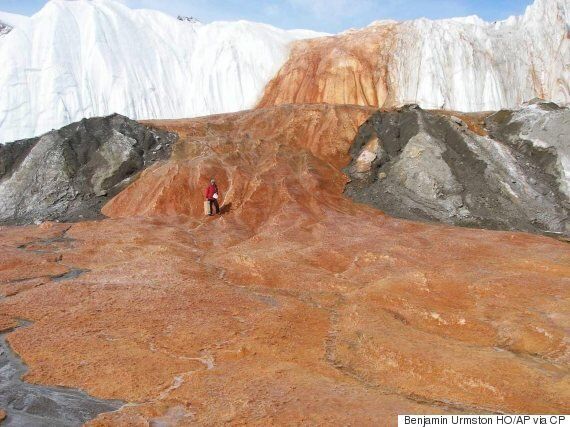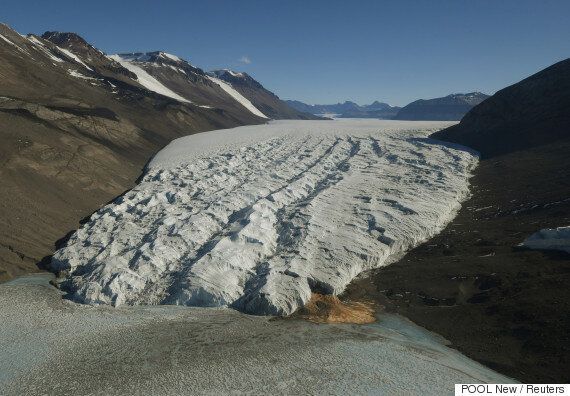Researchers from the University of Alaska Fairbanks and Colorado College just solved a mystery that dates back to 1911.
It's hard to imagine what American geographer Griffith Taylor must have thought when he first stumbled upon Blood Falls over 100 years ago. The water, which slowly oozes out of Taylor Glacier is a rich, stark red against the white ice.

The waterfall has been a subject of fascination for scientists, as it's home to a unique colony of microbes that exist without oxygen or light beneath the glacier's surface.
Scientists initially attributed the colour to algae, but it was later found to be caused by briney, iron-rich water that oxidizes, transforming into its bright hue when it touches the air.
Now, a team of researchers have tracked down that water's source.
The scientists used a type of echolocation-like radar to follow the water deep inside the glacier, something scientists had previously believed impossible, according a study published in the Journal of Glaciology on Monday. They found a large source of the salty water that may have been trapped under the glacier for more than one million years.

Despite annual air temperatures of - 17 C, the falls stays liquid thanks to water with a brine content of more than 13 per cent.
“The salts in the brine made this discovery possible by amplifying contrast with the fresh glacier ice,” lead author Jessica Badgeley said in a statement.
“Taylor Glacier is now the coldest known glacier to have persistently flowing water," her colleague Erin Pettit added.